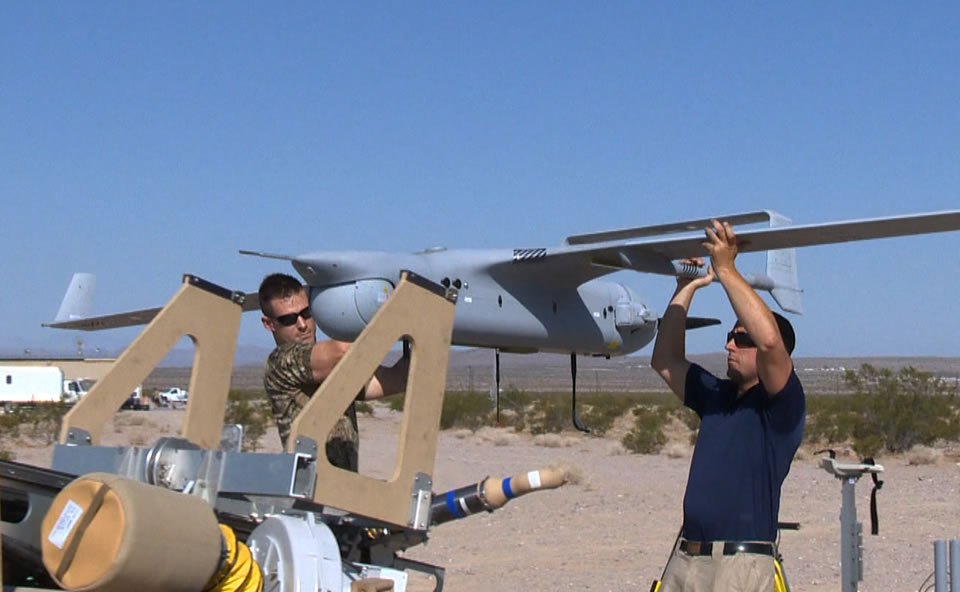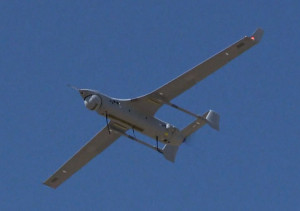

A little more than two years into its engineering, manufacturing and development phase, the RQ-21A Small Tactical Unmanned Air System (STUAS) entered developmental test at China Lake, Calif. beginning with a 66-minute flight Monday.
During the initial developmental flight test at the weapons station on Sept. 10, 2012 operators flew the RQ-21A using a unique pneumatic launcher and a recovery system known as Skyhook. This system, developed by the UAV manufacturer Insitu, Inc., eliminates the need for runways and enables a safe recovery and expeditionary capability for tactical missions on land or sea.
According to Col. Jim Rector, STUAS program manager (PMA-263) at Patuxent River, Md. the developmental test will be fast-paced, “We are on track for initial operational capability in 2013.” he added.
Sailors and Marines from from Air Test and Evaluation Squadron (VX) 30 at China Lake are not the first to experience the expeditionary “no runway” solution. Marines at Twentynine Palms are already training with an RQ-21A Early Operational Capability (EOC) system. These systems were delivered ‘off-the-shelf’, without special changes requested by the Corps.
While both RQ-21A variants are similar to operate, the RQ-21A STUAS is more robust. RQ-21A EOC uses long-wave infrared (LWIR) camera, which will be replaced with mid-wave infrared (MWIR) camera for production. The upgraded variant also adds enhanced features for operational security and an automatic identification system for maritime missions.
The Continental US (CONUS)-based deployment allows the Navy and Marines to train units and operators, collect additional performance data and identify opportunities to expand the flight envelope preparing the system for initial operational capability. “Marines are getting experience on how to operate and use the system while our team is collecting valuable data,” Rector said. “Lessons learned from this deployment will be directly applied to the program of record. EOC helps us mitigate and evaluate risks early on.”
RQ-21A provides expanded payload capacity and rapid payload integration so that the warfighter can use the most advanced, and relevant, payload for their unique land and maritime missions and counter-warfare actions. The platform provides persistent maritime and land-based tactical Reconnaissance, Surveillance, and Target Acquisition (RSTA) data collection and dissemination capabilities to the warfighter.
[wzslider info=”true”]
Want to enjoy more image galleries on Defense-Update? Subscribe for the premium level



















